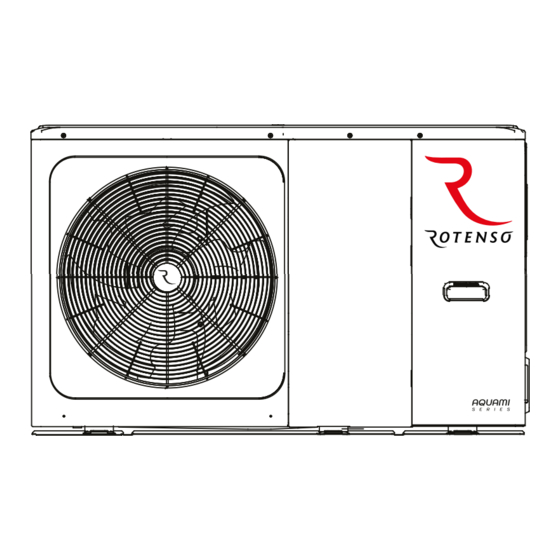
Chapters
Table of Contents

Summarization of Contents
Safety Precautions
Installation Precautions
Safety precautions to be taken during the installation process.
Explanation of Symbols
Explanation of safety symbols like DANGER, WARNING, CAUTION, and NOTE.
General Introduction
Unit Functionality
Units are used for heating, cooling, and domestic hot water applications.
Communication Wiring
Maximum length of communication wiring between units and controller.
Water Circuit Anti-freeze Protection
Glycol Concentration
Importance of correct glycol concentration based on outdoor temperature.
Accessories
Accessories Supplied with the Unit
List of accessories included with the unit.
Accessories Available from the Supplier
List of optional accessories available from the supplier.
Important Information for the Refrigerant
Refrigerant Type and GWP
Details refrigerant type (R32) and its Global Warming Potential (GWP).
Installation Site
Selecting a Location
Criteria for selecting an installation location based on customer needs.
Selecting a Location in Cold Climates
Instructions for unit installation in cold climates.
Selecting a Location in Hot Climates
Guidelines for installing units in hot climates, considering shade.
Installation Precautions
Dimensions
Provides dimensional data for the unit.
Installation Requirements
Requirements for mounting the unit securely.
Drain Hole Position
Details on the location and function of the drain hole.
Servicing Space Requirements
Space requirements for servicing the unit.
Typical Applications
Application 1
Illustrates a typical application scenario for the unit.
Application 2
Details on controlling heating/cooling modes and circulation pumps.
One Zone Control
Explanation of single-zone control operation.
Mode Set Control
Explanation of how to set operation modes.
Overview of the Unit
Disassembling the Unit
Instructions on how to disassemble the unit.
Main Components
Details the main components of the unit.
Electronic Control Box
Describes the electronic control box and its boards.
Water Piping
Discusses water piping requirements.
Filling Water
Details water filling procedures.
Water Piping Insulation
Discusses water piping insulation.
Field Wiring
Covers field wiring and electrical precautions.
Start-up and Configuration
DIP Switch Settings Overview
Overview and function settings of DIP switches.
Initial Start-up at Low Outdoor Ambient Temperature
Procedure for initial start-up in cold ambient conditions.
Pre-operation Checks
Checks to perform before initial start-up.
Field Settings
Configuration settings accessible via the FOR SERVICEMAN menu.
Trouble Shooting
General Symptoms
Common symptoms and their corrective actions.
Error Codes
List of error codes, their causes, and corrective actions.
Technical Specifications
General
General technical specifications of the unit.
Electrical Specifications
Technical electrical specifications for the unit.
Information Servicing
Checks to the Area
Safety checks for the area before servicing.
Work Procedure
Step-by-step procedure for servicing.
General Work Area
General work area requirements for maintenance.
Checking for Refrigerant Presence
Procedure for checking refrigerant presence.
Presence of Fire Extinguisher
Ensuring fire extinguisher is available during hot work.
No Ignition Sources
Prohibition of ignition sources in the work area.
Ventilated Area
Ensuring adequate ventilation in the work area.
Checks to the Refrigeration Equipment
Checks for refrigeration equipment before servicing.
Checks to Electrical Devices
Safety checks for electrical components.
Initial Safety Checks
List of initial safety checks for electrical devices.
Repairs to Sealed Components
Procedures for repairing sealed components.
Repair to Intrinsically Safe Components
Guidelines for repairing intrinsically safe components.
Cabling
Checks for cabling condition and environmental effects.
Detection of Flammable Refrigerants
Prohibition of ignition sources for leak detection.
Leak Detection Methods
Acceptable leak detection methods for flammable refrigerants.
Removal and Evacuation
Procedures for removing and evacuating refrigerant.
Charging Procedures
Procedures for charging refrigerant.
Labelling
Requirements for labelling decommissioned equipment.
Recovery
Best practices for refrigerant recovery during service.
Transportation, Marking and Storage for Units
Guidelines for transporting, marking, and storing units.





Need help?
Do you have a question about the AQM120X3 and is the answer not in the manual?
Questions and answers